Note: For the latest from Sophie (including her rhapsodic musings about Riga, her harrowing journey from Latvia to Utah to Alaska and then back to Utah, and her always-exciting adventures working at the BYU Bindery, read here.
For an account of Ari’s summer as a counselor at Science Camp and Adventure Camp and dealing with mean kids making fun of people who ride the little bus to school, read here.
Dear Family,
On our way to bag claim at the airport in Maui earlier this month, Crystal and I walked past a smiling person holding up a giant “Happy 25th Anniversary” banner.
“Newlyweds,” I muttered smugly under my breath, loudly rolling my eyes as we strode past.
It occurred to me at some point during the Democratic National Convention that Crystal and I have been married longer than anyone of consequence currently running for President or Vice President of the United States. The realization came upon discovering that Tim and Gwen Walz were wed on June 4th, 1994 — exactly one week after we were.
(I’ll save you a few keystrokes and tell you here that Don and Melania got married in 2005 while the Vances and Harris-Emhoffs both tied the knot in 2014. Twenty-fourteen! I had a kid in college in 2014. At least 90 percent of my wardrobe is older than 2014. I admit I was wrong to scoff at the 25th anniversary people in Hawaii — okay, I admit I’m wrong to scoff at anybody’s marital longevity — but if your marriage hasn’t outlasted Donald Trump’s latest run at the institution, then you still have to be considered at least kind of a newlywed.)
Not that there’s anything wrong with that. I don’t think you have to have been married for a long time (or at all) to be an effective leader. I only mention it because it makes me feel old.
(And yes, Mom, I can hear you saying aloud as you read that last sentence, “How do you think it makes me feel?”)
Fortunately, despite having been married for seven days longer, I don’t think I look anywhere near as old as Tim Walz (“that other Tim W.,” as I’ve taken to calling him). And that’s because I’m not anywhere near as old as he is.
It doesn’t happen often, but whenever someone musters the courage to ask why I got married so young, I’m always ready with the same, unoriginal answer: Because that’s when I met Crystal Kent.
If you’d’ve met Crystal Kent when you were 22, and you could somehow persuade her that you were worth taking a chance on (I still have no idea how I pulled that off), then you probably would have gotten married at 22 also. Or you’d’ve been crazy not to.
I actually met Crystal Kent for the first time when I was an infant living in Maryland. I met her again when I was an 8 year old living in New Jersey, and then a third time when I was a 21 year old living in Utah. And so in hindsight, it really took me kind of a long time to figure out that she’s pretty much the perfect person.
Anyway, Crystal and I have at times told people that our just-the-two-of-us trip to Maui earlier this month was to commemorate our 30th anniversary. I suppose that’s true, even though, as mentioned, we actually got married in May, but we probably would have gone anyway. As it turns out, you don’t really need a reason to go to Hawaii.
Even if it’s just for a week.
And before you ask, “Why would you go to the trouble of traveling that far just for one week? Why not just hop down to the Caribbean?” be advised that you would be at least the 400th person to pose that question, and I’m tired of answering it. It’s pretty simple, actually, and basically boils down to 3 immutable facts:
- Hawaii is better than the Caribbean. Always, and especially at this time of year.
- One week is all I felt I could spare. There may come a day when I’ll feel comfortable taking long, multi-week trips. I’m not there yet.
- One week is better than zero weeks.
Jet lag notwithstanding (and I don’t handle sleep deprivation/disruption well, so jet lag is a real problem for the people who have to deal with me), the trip was worth the trouble.
I have now been to Hawaii three times and know exactly three Hawaiian words: Aloha, Ohana, and Mahalo.
Aloha
Aloha means all kinds of things, and, consequently, I only say it in response to someone who first says it to me.
That is all I have to say about Aloha.
Ohana
Ohana means “the cheaper option.” If you ever go to the luau at the Ritz-Carlton in Kapalua, I recommend the “Ohana seating” which is only $250/person (unless you take the discount for sitting through a timeshare presentation) and the seats are not discernibly worse than the $300 “Ali’i Seating.” I don’t know what Ali’i means. I gather from context that it means “rich people.”
The luau was pretty posh. I’d been to a couple of others on previous Hawaii trips, and this was by far the most “corporate” (and probably the least authentic). The food was first-rate — though possibly more Asian than Hawaiian, which is fine, I guess — the lack of poi seemed to disappoint precisely no one. (It would have disappointed Karel, but she wasn’t there.) The post-feast show was entertaining for a while, but I was ready for it to be over 15 minutes before the promised fire dancer finally made his appearance at the end.
Overall the luau was a positive experience. Was it worth the Ohana price? Eh, probably not. But it did come with a real-flower lei and a free commemorative photo!
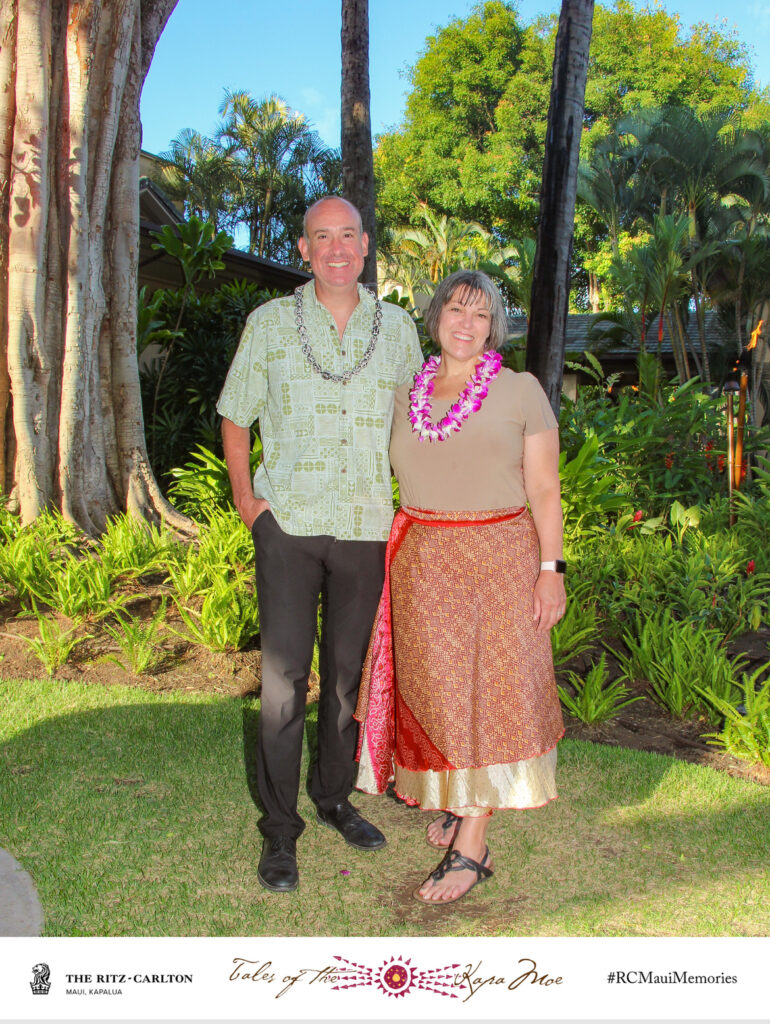
We somehow had a few dollars left after the luau, which we blew the next day at Mama’s Fish House.
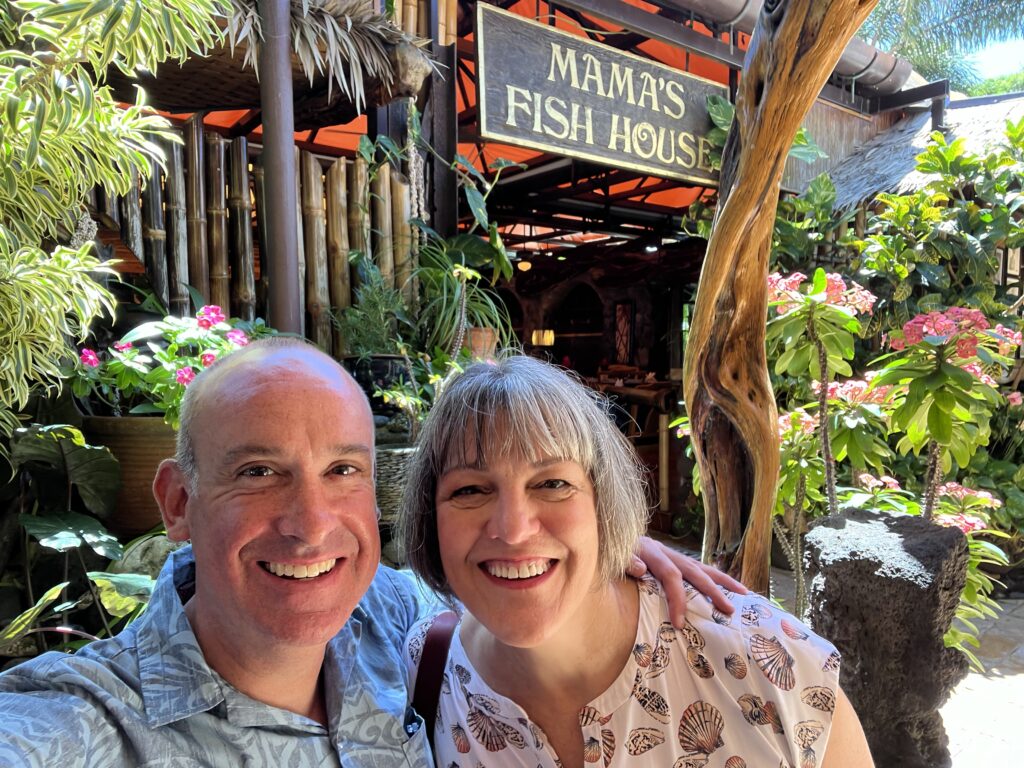
Mama’s Fish House, if you’re not familiar, is one of those legendary places where you have to make reservations months in advance and/or hope you get lucky.
We got lucky.
Crystal had unsuccessfully tried to make reservations back in June, and so she put us on some sort of waitlist. We learned on Monday that they had an opening on Wednesday at 11:00 a.m. in some sort of interior room with no ocean view. We took it.
Fortunately, when Crystal completed the reservation form, she checked the “it’s our 30th anniversary” box. This apparently got us an upgrade from the no-view interior room to what felt like the best table in the joint.
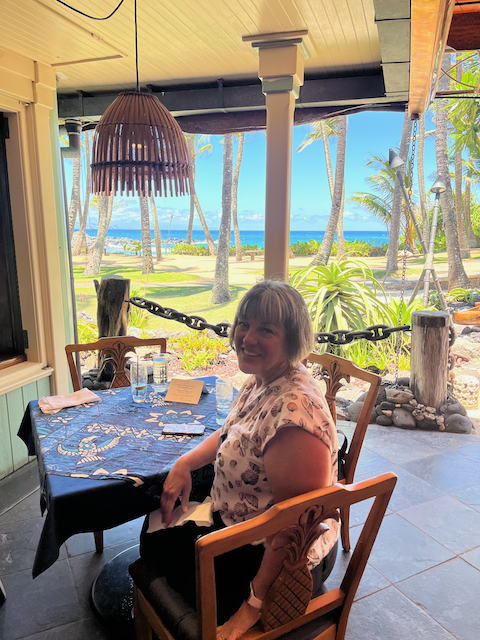
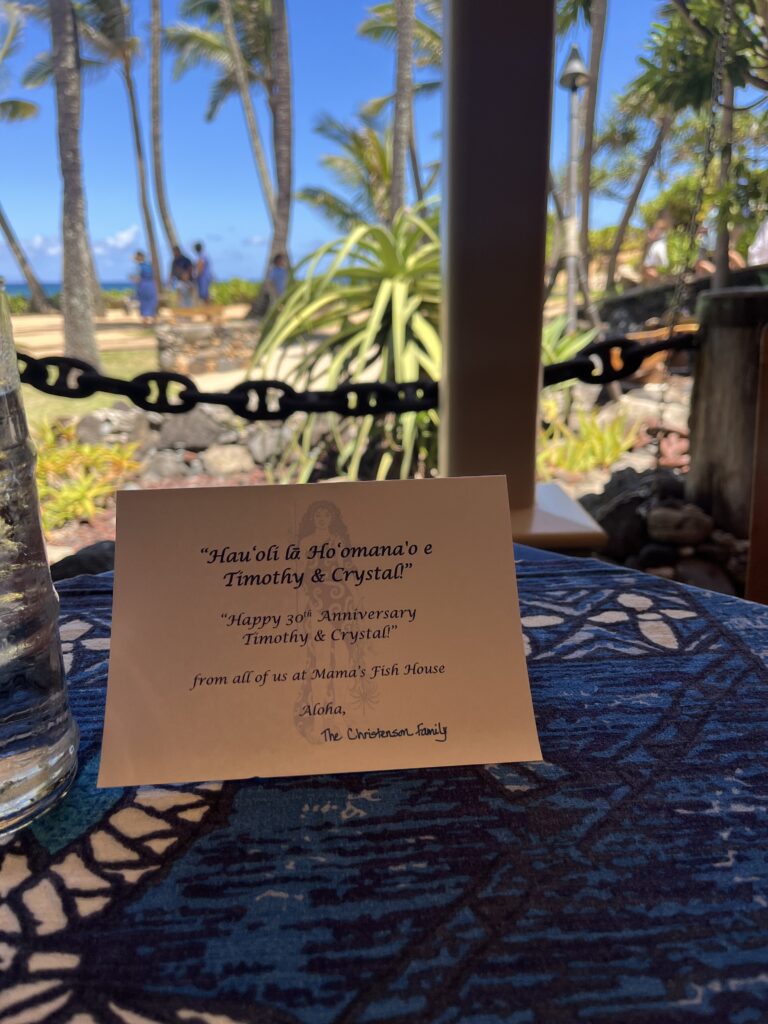
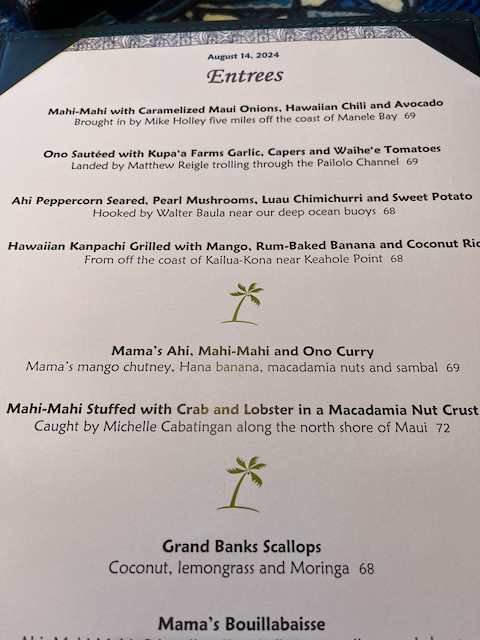
I can’t remember what Crystal had, but I ultimately decided to go with the Mahi-Mahi Stuffed with Crab and Lobster in a Macadamia Nut Crust, caught by Michelle Cabatingan along the north shore of Maui. Admittedly, $72 is a little more than I typically pay for a single lunch entree, but it’s not every day you get to celebrate having been married for exactly 30.214 years, and when I saw that the fish had been caught by Michelle Cabatingan of all people, how could I not?
It was pretty delicious.
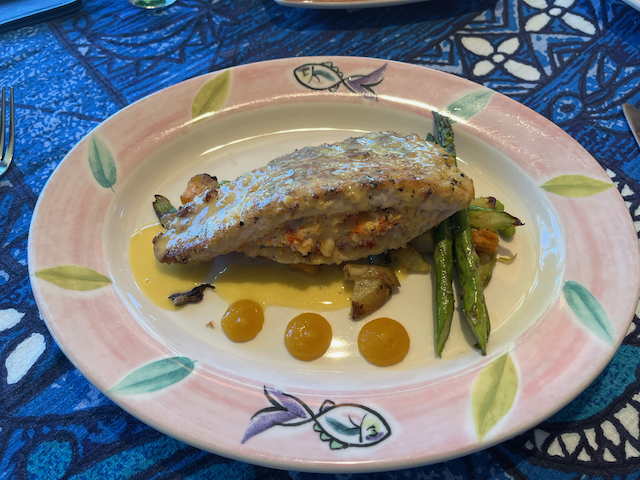
For dessert, we had the Polynesian Black Pearl (chocolate mousse with a lilikoi center, draped in chocolate ganache, served with toasted coconut, whipped cream, in a delicate pastry seashell), which is a little cliché — a lot of people get it — but it was delicious.
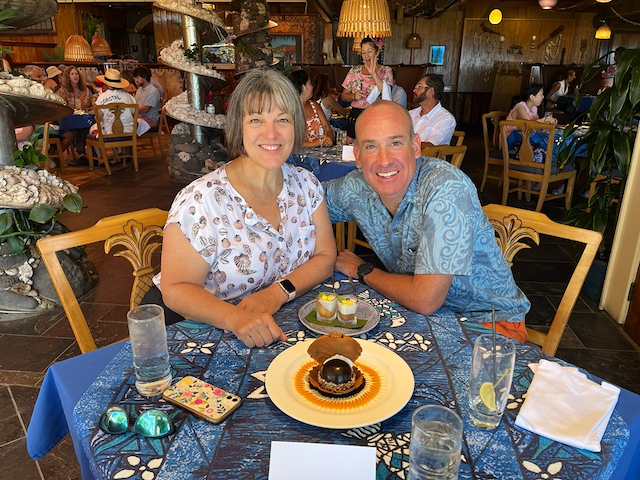
In the end, was the meal worth what we paid? Objectively, probably not. But it was an extraordinarily pleasant experience that I’ll likely remember for a really long time.
Mahalo
And finally, Mahalo means “you’re moving too slowly; kindly get out of my way.”
At least that’s how I use it. According to most people (and, strictly speaking, the dictionary) Mahalo is an expression of gratitude. And that’s kind of how I use it — i.e., when trying to squeeze past the slow-ambling people in front of me, I frequently found myself saying Mahalo. As in: Mahalo for letting me by and not blocking the whole everloving walkway.
My love of Hawaii notwithstanding, it’s possible that, with the exceptions of Disney World and the Boardwalk in Ocean City Maryland, there’s not a place on earth where I’ve encountered a higher percentage of spatially unaware, slow-moving people.
To be clear, the problem clearly isn’t the locals. It’s the nitwits on vacation. I felt vindicated in my frustration with slow-moving people on our last full day there when we were driving on the road to Hana. Alongside several official-looking “No Passing” signs are a number of clearly homemade signs that read “LET LOCALS PASS — MAHALO.”
My only regret was that I didn’t get a picture. (I couldn’t because I was driving too fast.)
Anyway, the road to Hana was all right, I guess. We didn’t make it all the way to Hana before turning around. But we did stop and “hike” to the Twin Falls waterfall along the way.
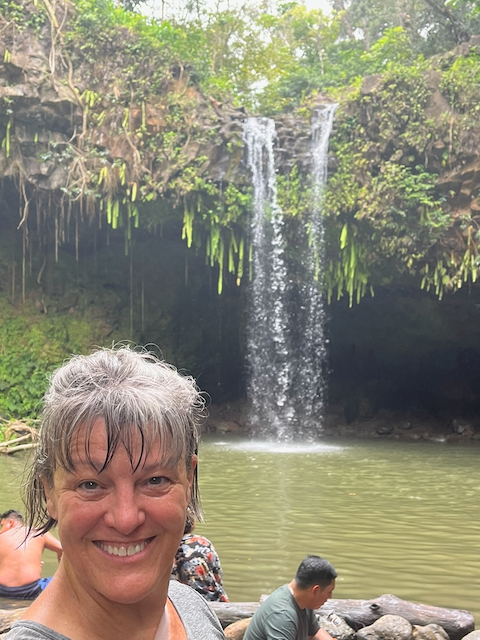
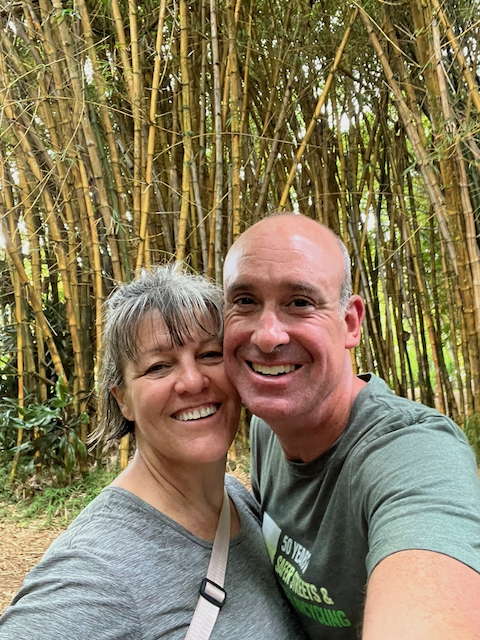
I put “hike” in scare quotes because the round-trip of a little over a mile is neither steep nor particularly treacherous, but I guess because they’re accustomed to dealing with a tourist clientele that struggles to maintain a 45 minute per mile pace on a flat sidewalk, they feel obligated to put up signs like this:
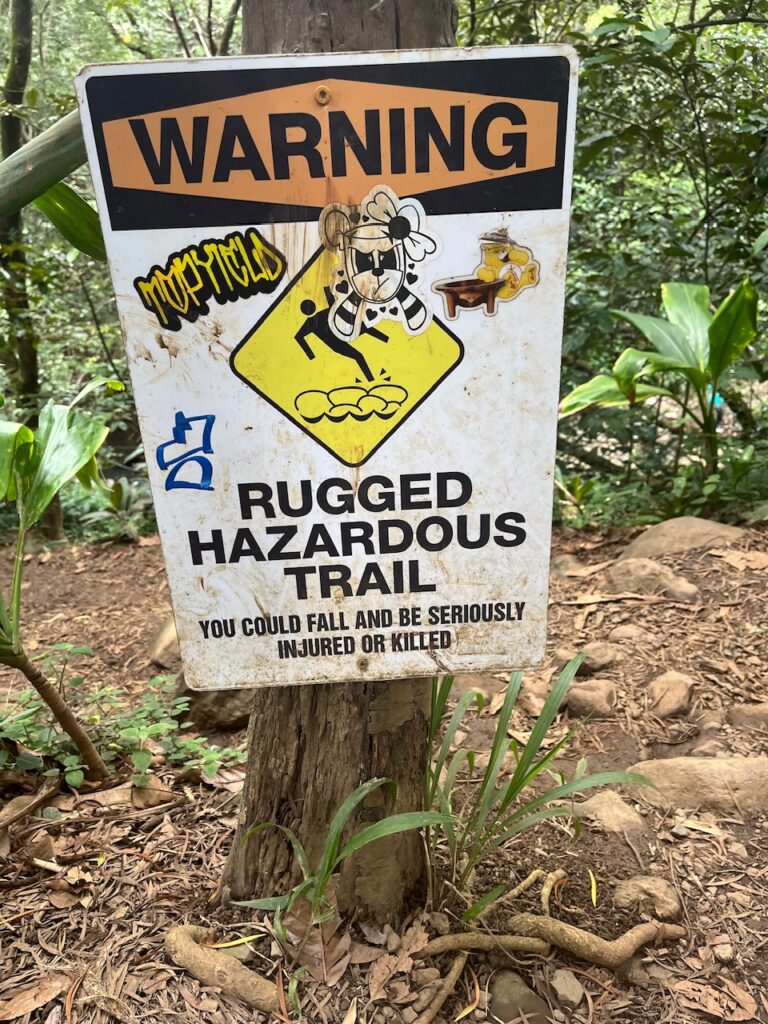
and this:
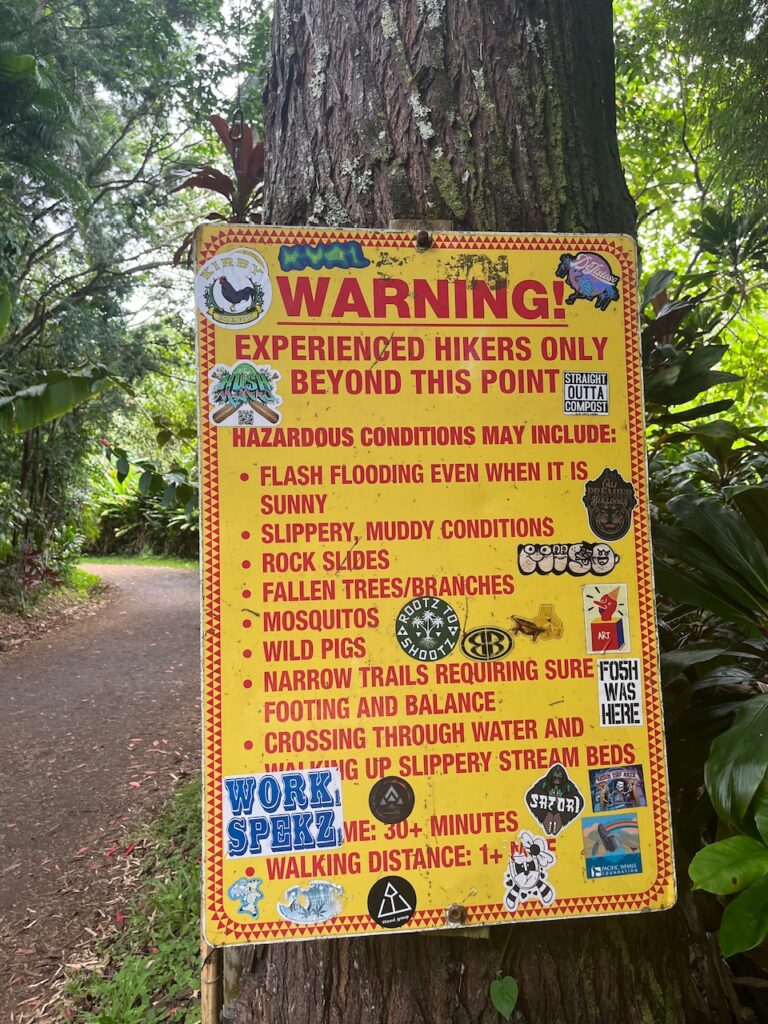
Haleakala, etc.
Our resort was on the western shore of the island, looking out at the islands of Lanai and Molokai, and a few miles north of what’s left of the town of Lahaina (which, sadly, still isn’t much beyond the foundations of all the burned-down houses).
Our location allowed us to take in lots of pretty sunsets…
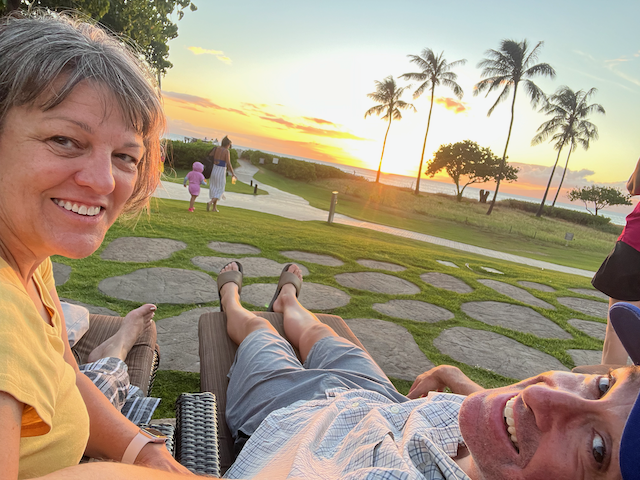
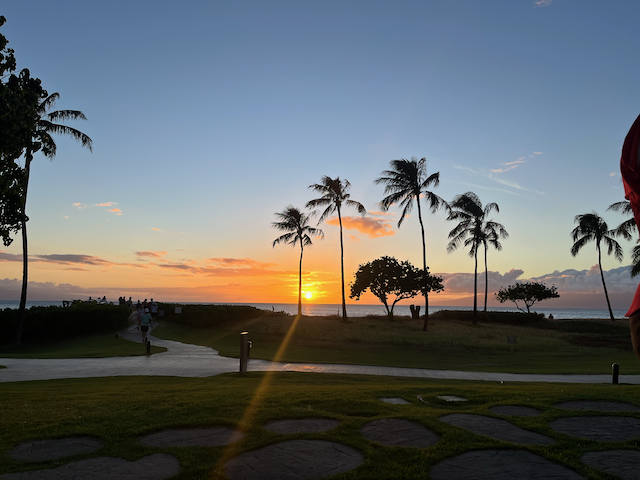
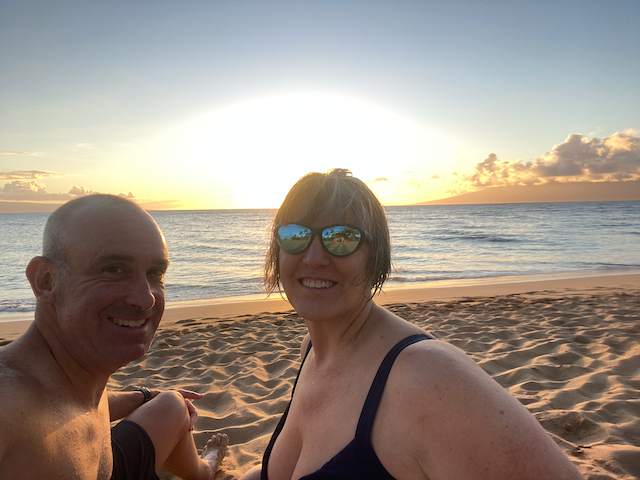
…but only one sunrise — and that was when we ventured to the summit of Haleakala.
People in Hawaii seem fond of pointing out that their islands are home to the three tallest mountains (from base to peak) in the world. (This claim requires the not-inconsequential caveat that these mountains begin 20,000 feet underwater.) Haleakala is the third-tallest of these three, at 29,704 feet — though only 10,000 of those feet are above sea level.
Still, 10,000 feet is pretty high, and we had been told (by someone, somewhere) that to watch a sunrise from atop Haleakala was an almost spiritual experience and not to be missed.
And so on Tuesday morning at a little after 3:00 a.m., we left our resort at sea level in the mostly charged Chevy Bolt we had rented for the week and set off for the mountain, some 50 miles away. Traffic was light at that hour and, according to the car’s dashboard, we had about 220 miles of range. No problem.
Prior to this vacation, I had precisely zero experience driving an EV, but still, it had briefly occurred to me that the alleged 220-mile range was not taking into account the fact that we would be climbing a 10,000 foot summit (or a 30,000 foot summit, depending who you ask). It did not occur to me, however, the extent to which it was not taking this fact into account.
We started to climb and I watched in horror as the range began to plummet — each mile of road was costing me 10 or more miles of range at times. I looked at the miles to destination in the GPS, did the math in my head and figured that, worst case, we still ought to get there with maybe 60 miles of range left. (I wasn’t yet sure how we’d get back, but that was a problem for later.)
My estimate was pretty spot on — we got to the GPS destination with about 60 miles left in the battery. Unfortunately, the destination was not the summit, but rather the toll station where you pay the $30 (or whatever it is) to enter the National Park. I gave they lady my credit card and asked how much further it was to the summit.
“Not far,” she replied, “just another 9 or 10 miles.”
I glanced at the altimeter on my watch, which read a little under 7,000 feet. We were nowhere near the top.
Ten linear miles to go with more than half a mile of vertical to climb. I did the math in my head again and concluded that there was no way this car was getting to the top of that mountain. I figured we’d run out of juice right around 9,000 feet — the perfect place to be stranded.
There’s a saying popular among some marathoners: “We haven’t come this far only to come this far.” Those words entered my mind, and I drove ahead, with no idea what we would do when the car inevitably died. As the range continued to bottom out, I entered what you might generously refer to as my “freak-out mode,” a condition familiar to Crystal (and, because I’m fairly certain there’s a genetic component to it, to my three brothers’ wives as well).
The details of freak-out mode are too embarrassing to relate here, but over the course of 30 years, Crystal has learned how to ride it out.
“Would it help if I said a prayer?” Crystal asked.
“Probably not,” I replied impatiently, “but knock yourself out.”
I continued driving and Crystal prayed.
It helped.
I immediately felt calm.
I looked at the range again when we passed the next mile marker. It still wasn’t encouraging, but instead of running “worst case scenario” calculations in my head, I was able to switch over to “likely scenario” calculations. If the final five miles were anything like the previous five miles, we might just make it. (I still had no idea how we’d get back (beyond coasting) but for some reason I didn’t worry too much about that.)
I wish I had taken a picture of the dashboard when we reached the summit, but I seem to recall it reading 18 miles of range remaining.
We got out of the car. It was freezing. Crystal had some warm-ish clothes, while I wrapped myself in the two giant beach towels we’d picked up at Costco on the day we arrived. Others people up there were wrapped in blankets and comforters they had clearly stolen borrowed from wherever they were staying.
Sunrise was still like an hour away. I got back into the car and wanted to turn the heat on, but that didn’t seem like such a good idea.
The sun eventually came up and it was … well … underwhelming. The fact that it was overcast didn’t help, but ultimately, I couldn’t see how even under ideal conditions it would be noticeably different than, say, watching a sunrise from an airplane. Nice and all, but probably not worth all the trouble. Sorry all the pictures are of me — that’s just because Crystal took all the pictures — I was too cold to fish my phone out my pocket.
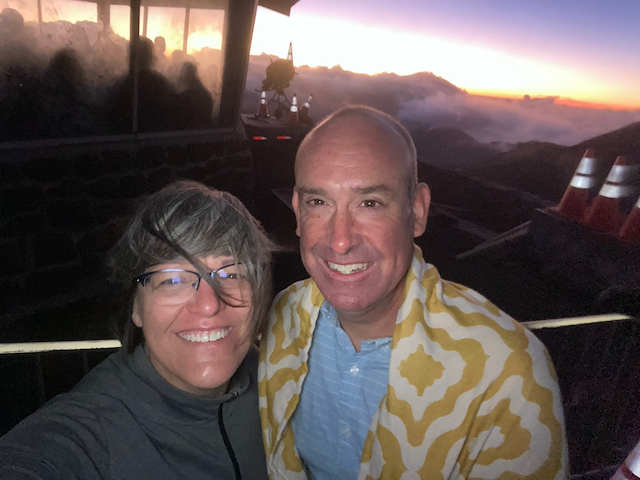
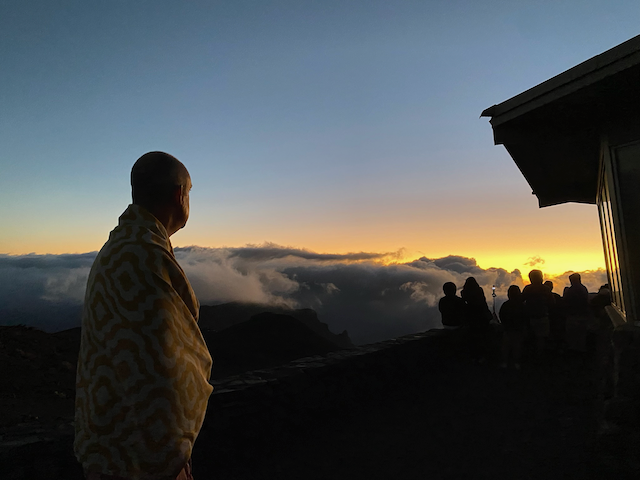
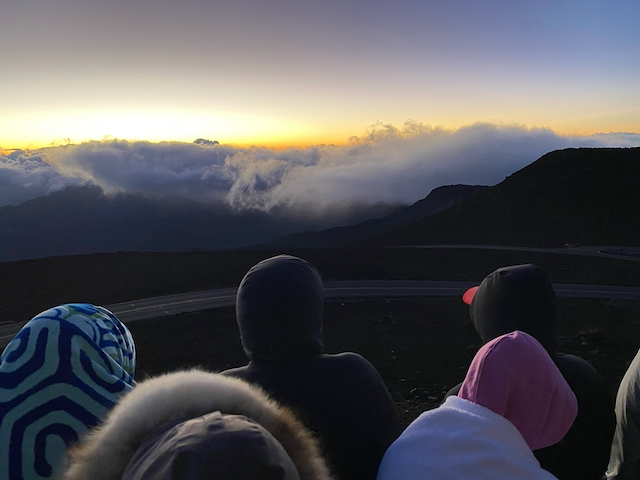
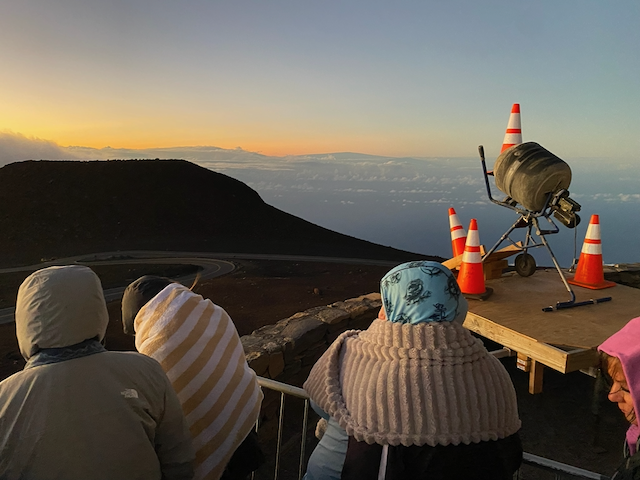
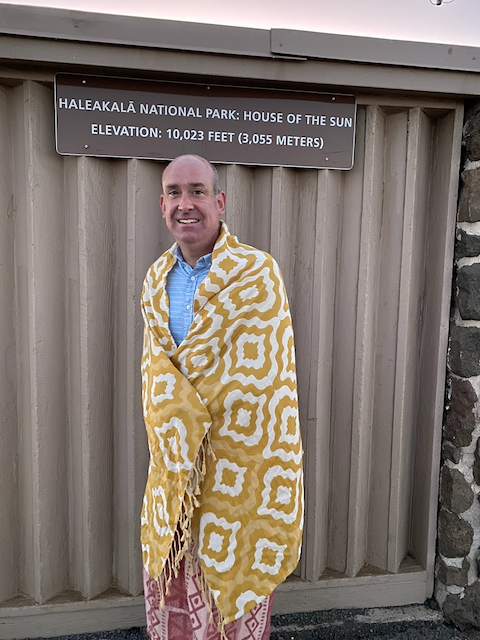
We got back in the car and started the drive home. I figured we could coast down most of the mountain, saving what little range remained that way. But then we experienced what felt like a miracle. It won’t sound like a miracle to EV owners, who already know how this story will end, but it felt like one to me. Because for the first time in my life, I was about to experience the miracle of regenerative braking!
I had heard of regenerative braking, but I always thought it was more of a theoretical thing — that the kinetic energy created by slowing the car down that was somehow captured by the battery helped to some degree, but didn’t actually charge the battery in any meaningful way.
I could not have been more wrong!
The trip down the mountain charged the crap out of that battery. By the time we got back to our resort at sea level — 50, 60 miles away, whatever it was — the range had climbed from 18 miles to nearly 100! I got to experience what we all learned in high school physics — that potential energy in its simplest form is merely a function of mass and height. I was crushing the battery by driving up that mountain, but at the same time, I was also accumulating a huge amount of potential energy! And then I got to literally watch that potential energy get channeled into the battery as the fuel gauge climbed ever higher.
It was mesmerizing!
So anyway, I guess I did have a spiritual experience of sorts on Haleakala, but it had nothing to do with the sunrise.
I still hate cars and I really hate driving. But it’s possible I’ll have to buy another car before I die. And based on my experience in Hawaii, it’s possible that car will be electric.
But I love riding bikes! And two days later, a tour company dropped us off two-thirds of the way up Haleakala with bicycles and we rode them all the way down to the sea. That was fun!
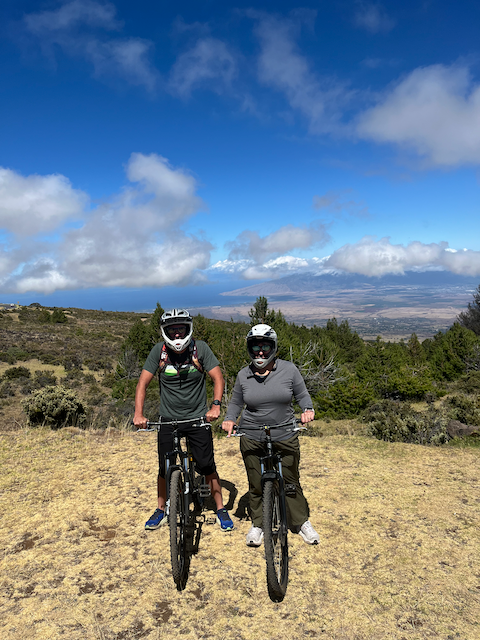
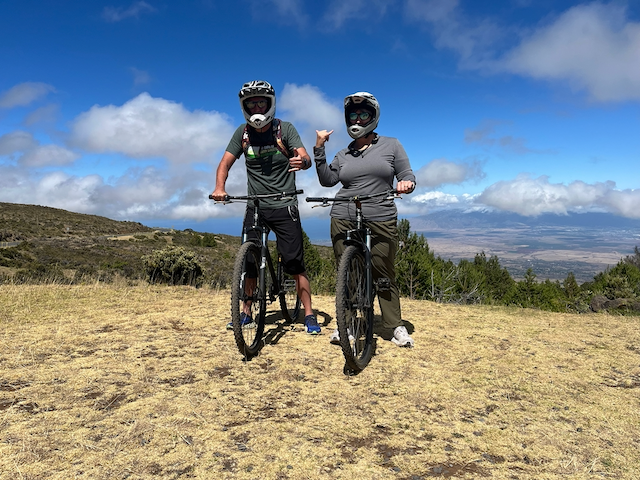
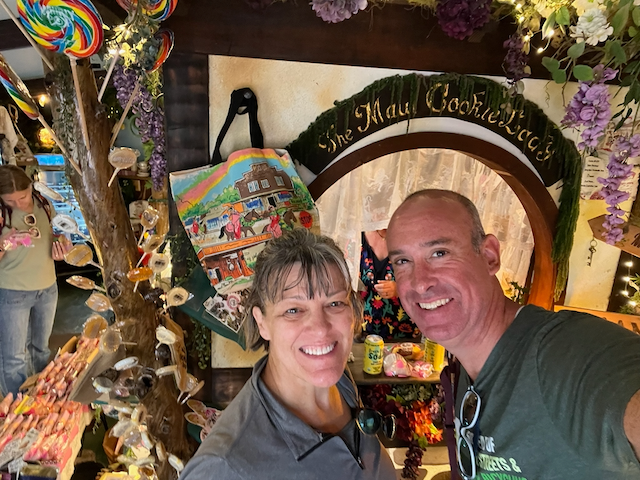
Also, we went to a lavender farm (4,000 feet up the mountain). That was less fun (and there wasn’t all that much lavender, and it felt more like France than Hawaii), but it was still pretty.
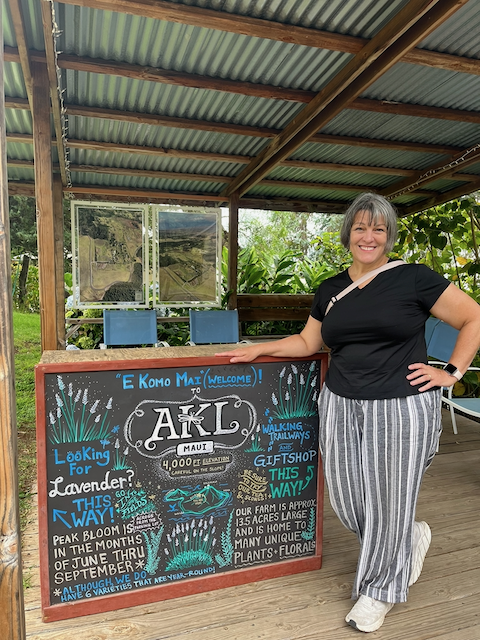
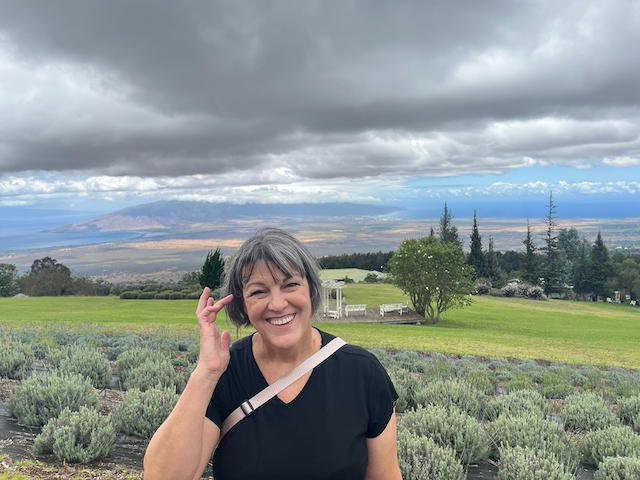
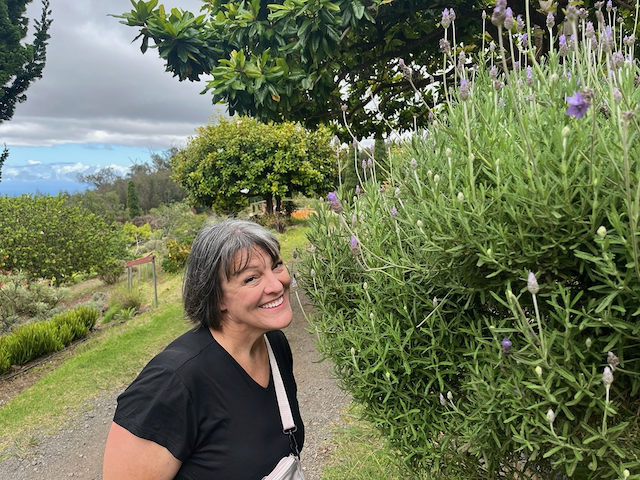
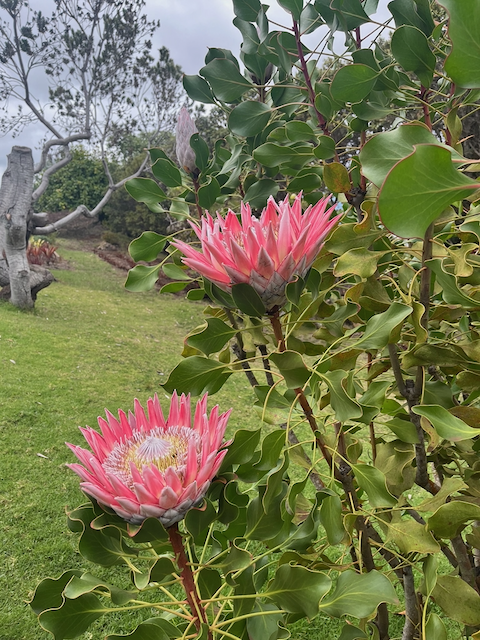
So that’s Maui. Five stars. Would go again.
Back to School
Crystal and I got home, and just like that, summer was basically over. Last-gasp activities included a Saturday night jaunt down to Nationals Park for Opera in the Outfield with the Eskelsens. Crystal, Ari, Grace, Emily, Jon and Ilse laid out blankets in what appears to be left field (Crystal was amazed by how perfect the outfield grass was) and had a great time watching Turandot on the big screen (piped in live from the Kennedy Center, I assume). I couldn’t go but wish I had.
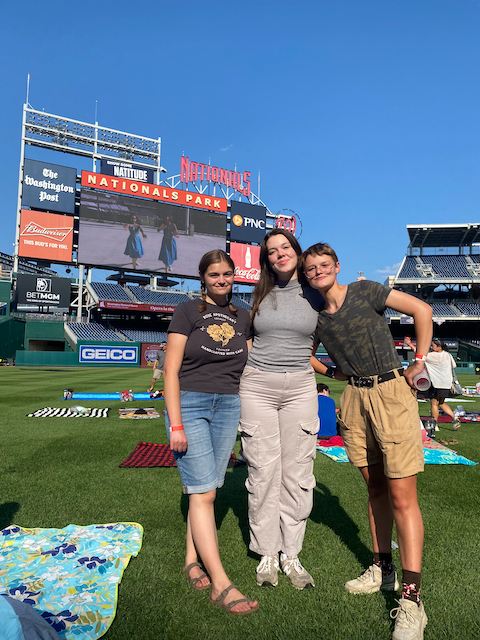
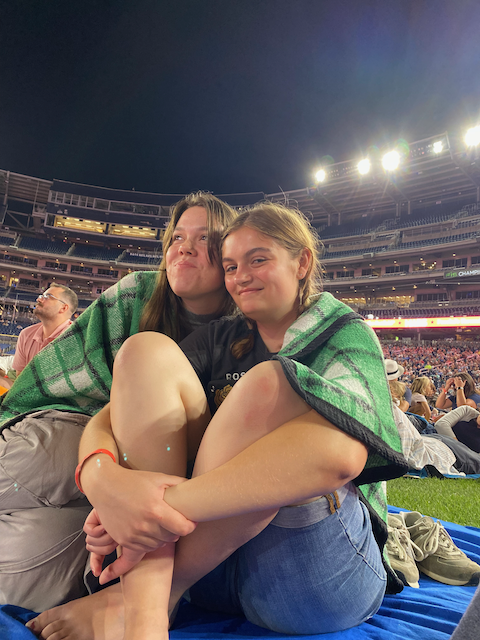
Grace finished her summer job as camp counselor at MUSA — a taekwondo studio up near Grandma’s house. She really took a liking to the family that owns the place and it sounds like they really took a liking to Grace (which isn’t really surprising — to know Grace is to love Grace).
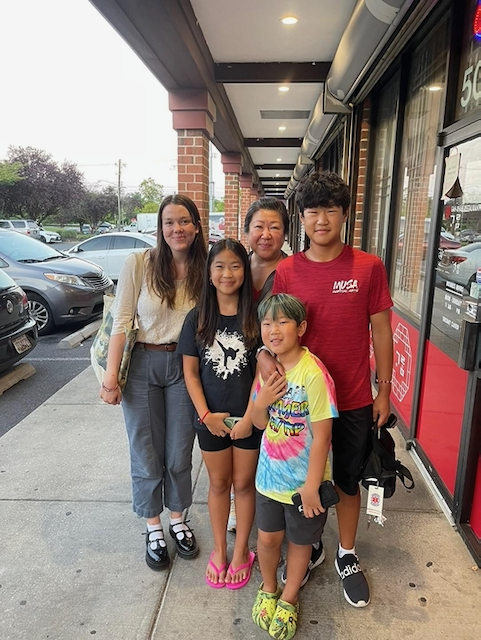
And then, Monday was back to life. Grace is now back at Southern Virginia University for her sophomore year. She has moved out of the dorm room that she shared with 3 other girls last year and into a much nicer apartment-like situation (which I think she is sharing with at least two of the same girls).
And Crystal returned to Ridgeview Middle School to greet a new crop of sixth graders — one of whom is pursing urban planning as a hobby. Who would have known, but high-functioning autistic boys are some of the sweetest people there are (most of the time).

And unlike last year, Crystal managed to get herself moved to a classroom with a window, which can only make life better. Tender mercies.
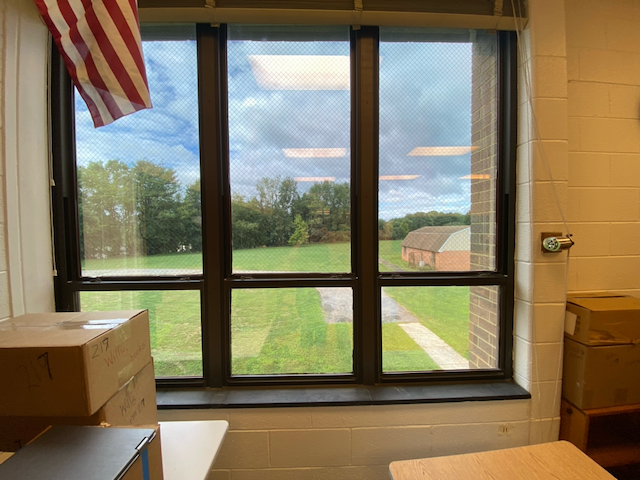
Meanwhile, I may not have seen many sunrises in Maui, but I’m content to keep chasing them close to home.
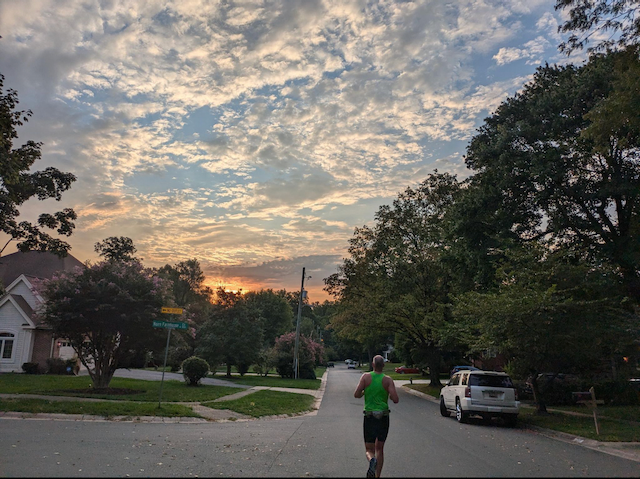
Hope you’re able to do the same.
Love,
Tim
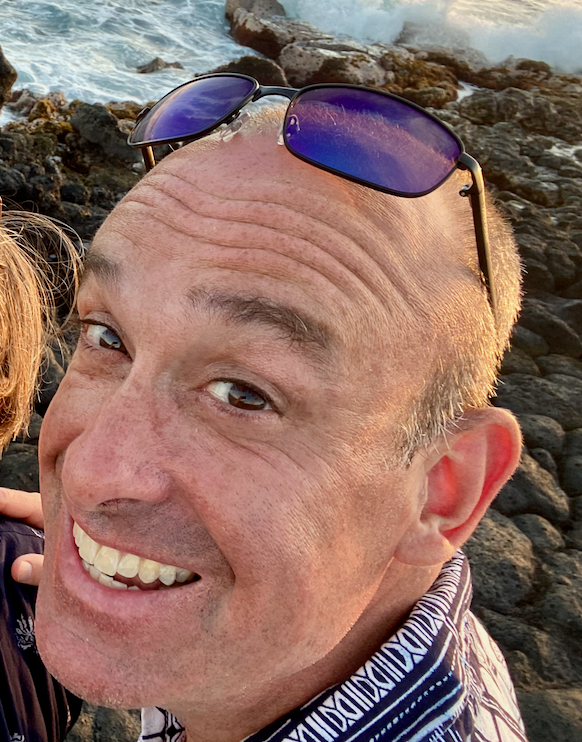
Managing Editor of The Famlet Monthly

I loved hearing all about your trip! Great pictures.
I absolutely love my Chevy Bolt and highly recommend an EV. I do relate to your story. I felt that while traveling in West Virginia.
Thanks for another wonderful Famlet! What a great trip to Maui! Happy Anniversary!!!